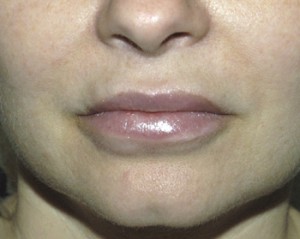
Permanent lip fillers can be done by implants or autogenous grafts. While successful lip augmentation can be done with synthetic materials, the softness and flexibility of the lips favors a natural soft tissue material. Fat is the most logical candidate and its injection into the lips has been done now for decades. Despite its natural composition fat injections have relatively poor persistence in the lip, perhaps because it does not naturally exist there is any significant amount.
In the Online First issue of the September 2016 JAMA Facial Plastic Surgery Journal, an article entitled ‘Long-term Analysis of Lip Augmentation with Superficial Musculoaponeurotic System (SMAS) Tissue Transfer Following Biplanar Extended SMAS Rhytidectomy’. In a retrospective single-blind study, 423 patients (almost all female) underwent a SMAS lip augmentation using SMAS grafts harvested during the facelift over a six year period. Photographic assessment of the results was done at 3 months, one and five years after surgery. Sixty of the patients were evaluated at five years after surgery.
Both the superior lip and the inferior lip showed statistically significant increases in volume at all evaluated time periods. The greatest volume increase was observed in the upper lip at 3 months while the smallest volume increase was seen in the lower lip at 5 years. The degree of increase in median volume seemed to weaken slightly over time, but remained statistically significant even at 5 years. Two of the five year 60 patients developed complications requiring further surgery. (3%)
The use of SMAS grafts in the lips does require one having a facelift to harvest it. But many women undergoing a facelift have thin lips as part of the aging process so the ‘recycling’ of what would normally be discard is both logical and opportunistic. What differentiates SMAS from fat? It is that it contains more fibrous tissue and the fat that it does contain is less metabolically active. This make account for its longer persistence than other types of lip grafts that contain fat.
Dr. Barry Eppley
Indianapolis, Indiana


